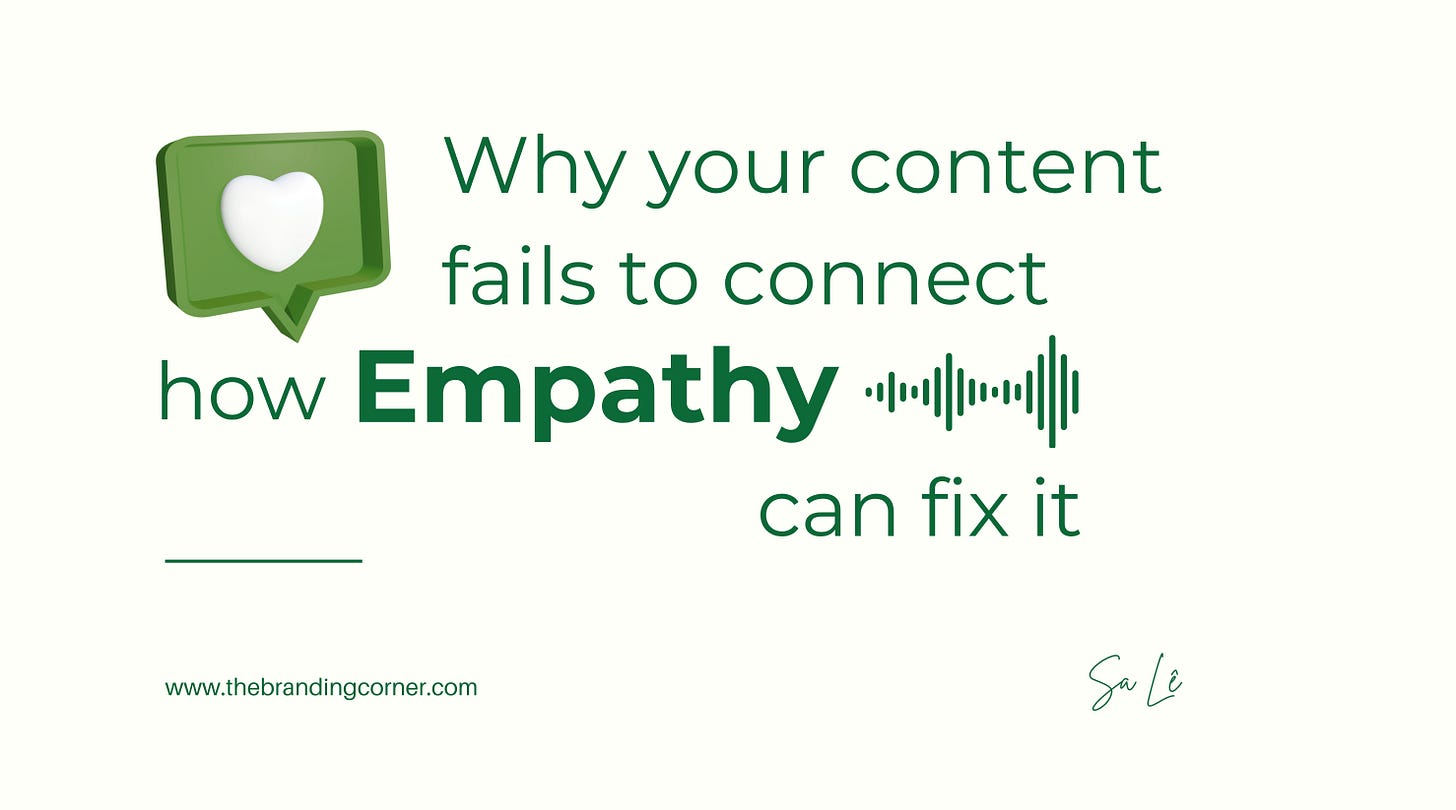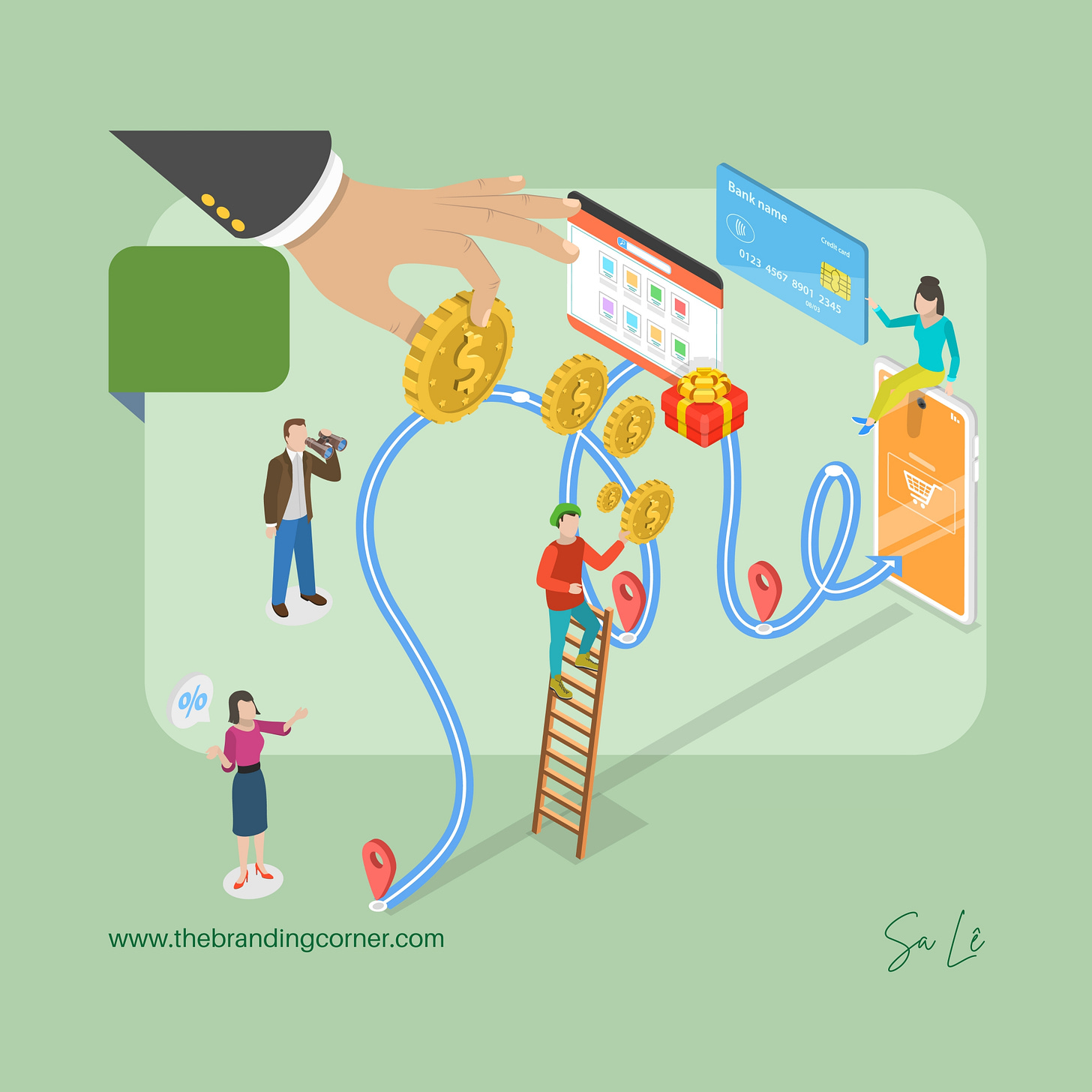Why your content fails to connect and how empathy can fix it
Struggling to connect with your audience in a crowded market? This post explains how to use empathy in your content marketing to build deep trust and drive sustainable growth.
Moving beyond the buzzword to find your advantage
In an increasingly saturated market where consumers are overwhelmed with information, empathy has emerged as the single most powerful competitive advantage. It is not merely the ability to feel another’s emotions, but a deliberate, strategic effort to step into the customer’s mind, see the world through their eyes, and truly understand their experiences, fears, and aspirations. Unlike sympathy, which is a feeling for someone, empathy is feeling with them, and it demands action.
This crucial distinction transforms empathy from a soft skill into a strategic business tool. A Salesforce report indicates that a staggering 75% of buyers expect brands to understand their needs. When a brand demonstrates deep empathy, it forges a strong emotional bond that drives loyalty and trust, making customers stick with you even when a competitor offers a similar product. This is even more critical in the age of AI-generated content, where authentic human understanding remains a key differentiator that cuts through the noise.
Empathy is not just an abstract concept. It delivers tangible and measurable business benefits. While empathetic content may not deliver an immediate ROI in hard conversions, it builds a foundation for long-term growth through higher customer lifetime value (LTV) and powerful brand advocacy. This article provides a practical framework for creating a customer-centric content strategy that delivers real, sustainable results.
1. The first phase of deep listening and data discovery
The journey to creating empathetic content begins not with writing, but with listening. The goal is to move beyond basic demographics to uncover your audience’s psychology, interests, behaviors, and unspoken pain points. This requires a two-pronged approach that combines the “what” of quantitative data with the “why” of qualitative data.
First, leverage quantitative data from your CRM, email lists, and analytics tools. This first-party and zero-party data provides a high-level view of customer behaviors, what they are doing, such as which pages they visit or what products they buy. These numbers, however, only tell part of the story.
True empathy comes from qualitative data, which reveals why those behaviors are occurring. The quantitative data might show a customer visited a product page ten times; a qualitative interview could reveal they hesitated because they were unsure how to use it. By synthesizing both, you can build a holistic picture of your customer’s world.
Actionable steps for deep listening:
Conduct one-on-one customer interviews: Directly ask open-ended questions about their challenges, goals, and daily frustrations. Listen with the intent to understand, not just to respond.
Analyze support tickets and sales calls: Your customer service and sales teams are on the front lines. The questions, complaints, and feedback they receive are a goldmine of genuine customer pain points.
Use surveys and polls: Deploy targeted surveys to gather specific feedback. Use simple polls on social media to quickly gauge sentiment on a particular topic.
Practice social listening: Monitor conversations on social media, forums, and review sites to understand how people are talking about your industry and your competitors.
Create empathy maps and buyer personas: Consolidate your research into practical tools. An empathy map helps visualize what your audience thinks, feels, sees, and does, while a detailed buyer persona gives your team a clear picture of who you are creating content for.
2. The second phase of crafting relatable and resonant narratives
With deep audience insights gathered, the next step is to transform that understanding into content that resonates. The focus must shift from selling a product to providing a genuine solution to the customer’s problem.
Storytelling is central to this phase. Instead of listing product features, tell authentic stories of people who have overcome similar obstacles, highlighting real-world transformations. A powerful example comes from Extra Space Storage. Instead of saying, “We have storage solutions for new parents,” they created a heartwarming video featuring real-life parents advising couples who were “freaked out about having a baby.” The brand’s message was delivered subtly and far more effectively because they focused on what the audience needed to hear, not what the brand wanted to say.
Actionable steps for crafting narratives:
Frame the customer as the hero: Your customer is the hero of the story, and your brand is the trusted guide or mentor who provides them with the tool or knowledge they need to succeed.
Use “You” and “We” language: Write in a direct, conversational tone. Using “you” makes the content feel personal, while using “we” can create a sense of shared community and understanding.
Focus on transformation, not just features: Don’t just describe what your product does; describe how it changes your customer’s life or work for the better.
Be relatable and jargon-free: Use language that mirrors how your customers talk about their own problems. Avoid corporate jargon that creates a distance between you and your audience.
3. The third phase of delivering the right message in the right place
Once the content is created, the final step is to ensure it reaches your target audience where and how they want to engage. Empathetic delivery is just as important as empathetic creation.
Actionable steps for delivery:
Choose platforms where your audience lives: You don’t need to be on every channel. Focus on having a strong, valuable presence on the one or two platforms where your ideal customers are most active and engaged.
Segment your email list: Instead of sending the same email blast to everyone, segment your subscribers based on their interests, past behaviors, or where they are in the buyer’s journey. This allows for highly personalized and relevant messaging.
Use video to convey emotion: Empathy is often best communicated visually. Use short-form video (Reels, TikTok) or longer-form content (YouTube) to show real faces, share customer stories, and demonstrate your brand’s human side.
Listen, learn, and iterate: Empathy is a continuous process. Track engagement metrics, listen to feedback in the comments, and be willing to adjust your strategy based on what you learn. A truly empathetic brand is always evolving alongside its audience.
4. Understanding Empathy in a Global and Local Context
While the principles of empathetic marketing are universal, their effective application requires a deep understanding of cultural context.
Global brands leading with empathy: Several global brands have demonstrated the power of this approach. Dove’s “Real Beauty” campaign directly addressed the self-esteem issues of women, building a strong emotional connection. During the pandemic, the meditation app Headspace turned a simple handwashing tutorial into a meditative practice, showing empathy for people’s shared anxiety. Patagonia lives its customers’ values by investing in sustainability, building intense loyalty within its community.
Further examples of empathetic marketing: Beyond those, other brands have built their entire reputation on empathy:
Always #LikeAGirl: This iconic campaign tapped into a powerful cultural insight: at some point during puberty, the phrase “like a girl” becomes an insult. By creating content that aimed to change the phrase’s meaning into a statement of strength, Always showed profound empathy for the confidence crisis young women face. The campaign sparked a global conversation and built immense brand loyalty by tackling a deep-seated social stereotype.
Zappos: The online shoe retailer is legendary not for its products, but for its customer service philosophy. Zappos empowers its employees to practice empathy on a personal level, encouraging them to stay on the phone with a customer for as long as it takes to solve their problem, even if it takes hours. These stories of deep, human-to-human connection in a corporate setting have become the brand’s most powerful marketing tool, fostering a reputation for care that drives incredible word-of-mouth and customer loyalty.
5. Navigating the future with an AI and human partnership
While empathetic marketing is human-centric, Artificial Intelligence (AI) is playing an increasingly important role in scaling its capabilities. Advanced AI tools can use sentiment analysis and natural language processing (NLP) to decipher emotional patterns in customer text. This allows brands to achieve hyper-personalization at scale, tailoring messages not just based on behavior but also on an individual’s emotional state.
However, this technology has a critical limitation: while AI can recognize emotional patterns, it doesn’t actually feel emotions. AI’s role is not to replace empathy but to amplify it.
The future of marketing is a partnership between AI and humans. AI should be seen as a “co-pilot” that helps marketers work more efficiently by automating repetitive tasks and processing massive datasets to find trends. This frees up marketers to focus on their irreplaceable roles: making ethical judgments, crafting authentic stories, and developing a creative vision. The value of a marketer in the AI era is no longer just in creating content but in generating the empathy behind it. AI can automate the writing, but it’s the human who breathes life into the narrative, ensuring the final message is genuine, meaningful, and resonates on a human level.
Conclusion
Empathy has transcended its role as a mere marketing tactic and has become a fundamental strategic requirement. It is a trainable skill, a foundation for building trust, and a driver of sustainable business growth. The roadmap to achieving it is a disciplined, data-driven, and iterative process that requires a fundamental shift in mindset from just selling to truly serving the customer.
In the future, while technology like AI can help brands scale their empathetic content, the core of it remains a uniquely human responsibility. The most successful brands will be those that balance data-driven precision with authentic, human-centered connection. This new standard for marketing excellence is built on integrity, deep understanding, and a genuine commitment to helping, not just selling. The future of marketing is not about knowing everything. It’s about feeling something.






